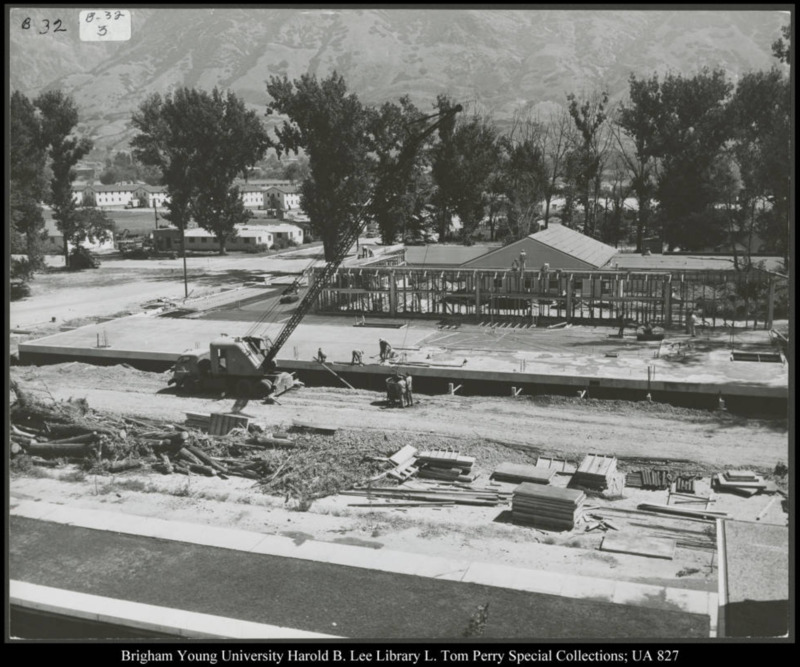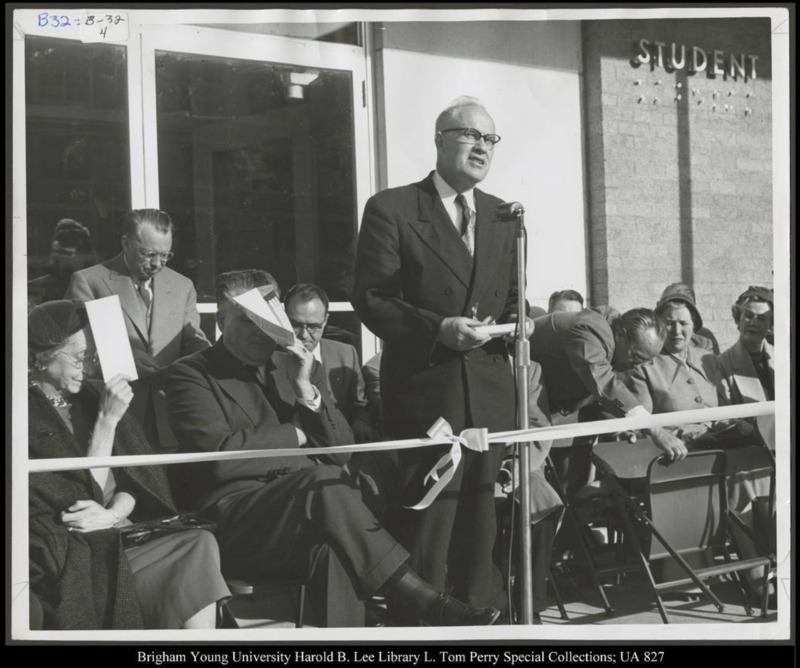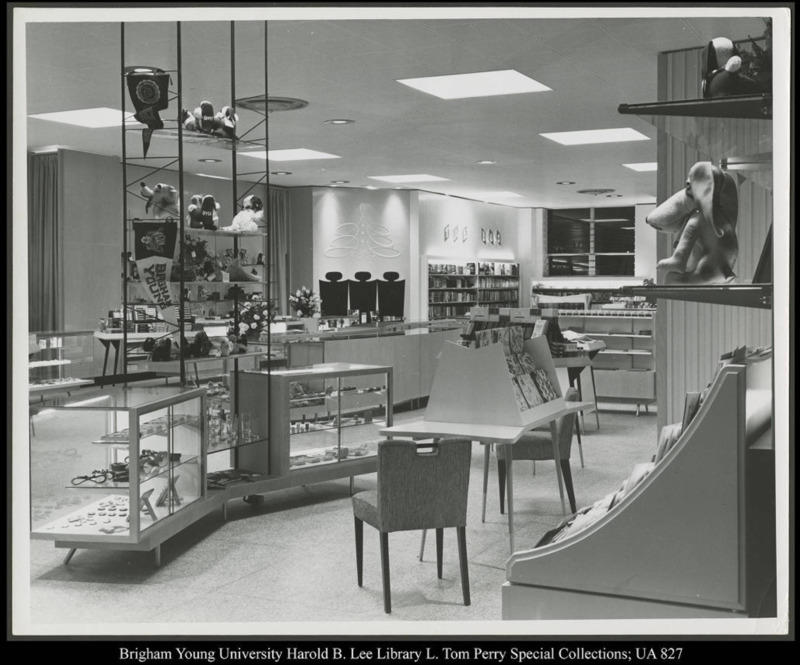Herald R. Clark Building (HRCB)

The Herald R. Clark Student Service Center was originally built to host the BYU bookstore. Today, the Herald R. Clark Building hosts the David M. Kennedy Center for International Studies.
As the 1950s dawned, Brigham Young University administrators recognized the campus badly needed to expand in size and capacity. In addition to new buildings for housing and classrooms, expanding the bookstore was also necessary. After scrapping plans to simply add a wing to the Joseph Smith Memorial Building, BYU resolved to instead erect a brand new building, hired architect Fred L. Markham to design the structure, and contracted Tolboe Construction to build it. Tolboe finished in 1952, and the BYU bookstore opened in the new location in March 1953 after an opening ceremony presided over by Elder Harold B. Lee, an apostle of the Church of Jesus Christ of Latter-day Saints.
BYU dubbed the building the Herald R. Clark Student Service Center, naming it after BYU’s former dean of the College of Commerce (1934–1951) and longtime bookstore manager (1915–1952). BYU president Ernest L. Wilkinson considered giving the bookstore’s new home Clark’s name especially appropriate “since his management of the bookstore is largely responsible for the funds from which this building has been constructed.”
Clark was both a businessman and a scholar; while managing the bookstore, he graduated from BYU in 1918, earned an MBA from the University of Washington in 1924, and taught students for forty-one years. Clark’s influence extended even further, beyond the bookstore, classroom, and college. Something of a renaissance man, Clark was a musical aficionado, and he found ways to book world-class performers at prices BYU could afford. As Gerrit de Jong said, Clark “accomplished the seemingly impossible in booking world famous artists… at extremely low fees.” BYU released Clark as bookstore manager in 1952, shortly before it reopened in the new space named for him, and he gave remarks at the 1953 opening ceremony.
Although BYU built the Clark Student Service Center specifically to host its bookstore, in 1964, BYU moved the bookstore to the brand new Ernest L. Wilkinson Student Center. Around this time, BYU also renovated the Clark Building, adding new offices and workroom spaces in what as well as air-conditioning. About a decade later, in the early 1970s, the Clark Building also hosted offices for Continuing Education and Educational Media Services.
In 1984 and 1985, BYU extensively remodeled the Clark Building, after which it became almost exclusively dedicated to hosting the offices of the David M. Kennedy Center for International Studies, plus some general-use classrooms.
Born in Randolph, Utah in 1905, David Matthew Kennedy, the Center’s namesake, was a banker and statesman. In addition to serving as Richard Nixon’s secretary of the treasury, as a Latter-day Saint Kennedy strove to “bring the Church to the world” after Church president Spencer W. Kimball called upon Kennedy in 1974 to serve as the Church’s global ambassador-at-large. Just as BYU had named the Clark Building for an admired elder businessman, so too did BYU name the Kennedy Center for an admired elder statesman.
The Clark Building continues to host the Kennedy Center, and each carry on their namesakes’ legacies of creativity, dedication, and faith.
Images






















